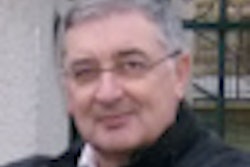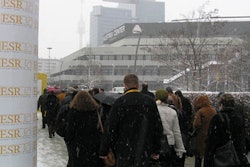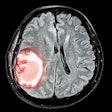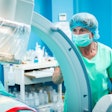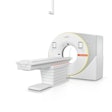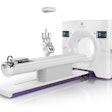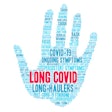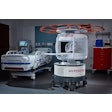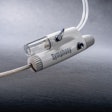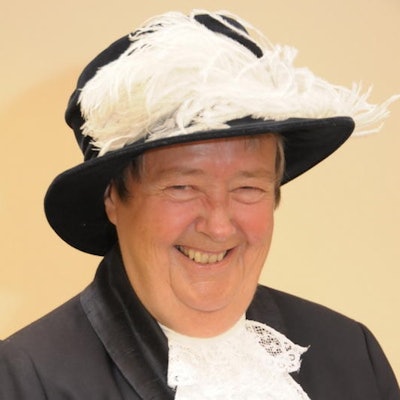
As ECR 2004 begins, AuntMinnie.com is pleased to present an in-depth interview with this year's president, Professor Helen Carty. She is a senior member of the Royal College of Radiologists, a consultant radiologist at the Royal Liverpool Children’s Hospital, Alder Hey, and professor of pediatric radiology at the University of Liverpool in the U.K.
You have been a tireless advocate for children’s health. How have your experiences as a pediatric radiologist shaped your approach to leading this year’s congress, and its educational and scientific programs?
I am a pediatric radiologist and have been for nearly 30 years. During that time I have seen pediatric radiology gain strength as a subspecialty -- and quite rightly so -- as the radiology of children’s illnesses is different from the radiology of adult illnesses. There is an overlap as children approach adulthood, but much of the pathology that arises in pediatrics occurs as a result of inborn errors, and it is unreasonable to expect a busy general adult radiologist to be familiar with these.
However, there is an international shortage of radiologists, and of pediatric radiologists in particular, and it is unreasonable to expect that every child’s x-ray will be reviewed by a specialist. It is important, therefore, that meetings such as ECR provide a platform whereby those who have to do some pediatric radiology are kept abreast of developments that impact upon the health of children, the way that techniques developed for adults can be adapted for use in children. A very good example of this is the procedures that can be used to reduce radiation dose to children while still obtaining high-quality diagnostic imaging.
ECR also aims to provide high-quality refresher courses reminding people of the major issues in pediatric radiology that make a very significant difference to children, particularly in relation to morbidity, i.e. one would not want to miss something that leads to preventable disease. A simple, but very good, example of this is a failure to appreciate areas of collapse on children’s x-rays, partly because the quality of the x-ray is poor, which can lead to ongoing infection and bronchiectasis, which is a preventable disease in many instances. Therefore, the aim of meetings such as ECR is to provide a platform for the interchange of the specialist with the generalist, while still offering sufficiently stimulating scientific new developments that the specialist, also, has much to learn.
The second advantage of a general meeting such as ECR is that specialist pediatric radiologists can easily access specialist areas such as new developments in the adult world, i.e. chest radiology and musculoskeletal radiology, which may impinge upon the interpretation of pediatric x-rays. An excellent example of this would be an understanding of the patterns of disease on high-resolution CT of the chest and interpreting them in relation to pediatric illnesses.
We have also this year introduced a foundation course in radiology. This is not just for pediatrics, it is for general radiology. This year the abdomen will be covered, but next year it will be the chest and the following year the musculoskeletal system.
The philosophy behind this is to provide a very high-quality refresher course on the fundamentals of radiology in these sectors, particularly in relation to the interpretation of plain radiographs and then the logical progression to cross-sectional imaging. Too often today, much cross-sectional imaging is done because of a failure to appreciate pathology that can easily be identified on plain radiographs. Thus, radiography has a significant effect on healthcare in that it can reduce costs. It can also reduce anxiety, and it has an impact on the total world medical irradiation.
One of the new and exciting features of this congress is the inclusion of papers on molecular imaging, with two formal scientific sessions dedicated to this. There are also some state-of-the-art refresher courses, and this theme will be further developed in future years. The translation of molecular imaging from a research tool to practical day-to-day reality has, I think, arrived, and it is important that this is recognized.
Another issue that will be addressed this year is a session devoted to SARS, not so much the radiology of SARS but its impact on the community, and the requirements for a community to address a threatening episode such as this.
 |
| Dr. Helen Carty |
How did you come to be involved with the ECR?
At the beginning of the establishment of the new-style ECR in 1991, I was invited to become a member of the pediatric subcommittee and subsequently became chairman of this committee. I have lectured and presented at every ECR meeting since 1991, though this year I am afraid I will be too busy to give any scientific presentation.
Through my involvement with these committees, I gradually came to know colleagues from across Europe in other disciplines and exchanged ideas with them. It has been an extremely rewarding and stimulating period of my professional life. My horizons have been expanded. Also through my involvement with ECR, I became involved in many of the teaching programs that took place across Europe, such as the Halley Project and international NICER and STAR courses.
In particular, the Halley Project provided an insight into the privations of our colleagues from the old Communist-bloc countries and the conditions under which they worked. It is astonishing to me, and very heartwarming, to see the rapidity of development of radiology in these countries since their liberation. We have much to learn from them, and it is particularly pleasing for me this year to see the program that has been put forward by our Polish colleagues largely relating to neuroradiology. The rapidity of change with the development of freedom, while I am sure in itself has brought other challenges, must be a testament to the world that oppression does not work.
Any other new programs in store for this year's meeting?
The Hospital Administrators Symposium has been instituted to try to bring together purchasers and radiologists. Too often when decisions are made about PACS, they are made not in a proper consultation between users and purchasers, and, if PACS is installed incorrectly, or inappropriately organized, then clearly it is a waste of money.
The catalyst of this was a request from some of our German colleagues to set up such a symposium. I hope this is a success and can be continued into the future in such a way that administrators appreciate the critical importance of good IT in patient care. At the end of the day, that is what we are about. It is the delivery of patient care, and all these facilities are not toys for radiologists but are there with a fundamental purpose.
I understand that England and Ireland are the official host countries of ECR 2004, and will be joined by Poland and Korea as official guests. What can we expect to hear in their presentations?
Last year’s initiative in setting up the ECR meeting was a huge success. So much so that there are now many countries that would like to be the official invitees. I suggested to the Polish society that they might like to take this position. This suggestion was greeted with alacrity. The standard of radiology in Poland is high, and they were keen to display to the world the talents of their young radiologists. Their program is devoted to neuroradiology.
Korea has been chosen as the first overseas country. We had been toying with the idea of extending the program, and had received an official request from the Korean Radiological Society suggesting that they would be delighted to take part. I look forward to their presentation, which will relate to cholangiocarcinoma. Though this is a much rarer clinical issue in the West, it does occur and therefore I suspect there will be a lot to be learned.
The Electronic Poster Online System (EPOS) has been widely lauded following its introduction at last year's meeting. Have any improvements been planned for the system or new uses for the materials?
This year the second edition of EPOS will offer extended and upgraded features. Authors of oral presentations were given the opportunity to upload their material to EPOS, a dedicated EPOS teaching area has been established where trained staff will explain its use as well as submission steps, and presenters' work will again be available to the world on the ECR's Web site, and thus reach a huge audience.
The entire EPOS area will have extended opening hours, allowing delegates ample time to visit the scientific exhibition and to explore the benefits of the online system. Selected interesting exhibits from each topic have been assigned to Electronic Poster Sessions (EPS), designed to facilitate direct contact among scientists and clinicians working on the same topic. The authors of these exhibits will present overviews of their most important findings, as well as answer audience questions.
Radiology under the U.K.'s National Health System has endured its share of struggles in recent years, notably in shortages of trained radiology staff as well as MRI and CT scanners, leading to lengthy delays in care. Have recent initiatives to improve staffing and provide equipment had a real effect yet on this situation? What do you see as the most important remaining issues, and the most critical needs?
There has undoubtedly been an improvement in radiology equipment in the U.K, which has been funded, mainly, from lottery money, not from standard NHS revenue sources. This is welcomed by radiologists. It provides better facilities for patients.
However, it has had an impact on the workload in radiology, in that the amount of information that is obtainable by the new scanners, even though it is processed quickly, is huge, and requires increased time to review. Therefore this has a knock-on effect on the work patterns of radiologists. We are not complaining about the improved quality, but sometimes the extra workload is not appreciated.
There has been a slight overall increase in the number of radiologists now in post in the U.K., and there was one year in which there was an extra 100 trainees put into the system -- but this again has been reduced and the problem is that this stop/start arrangement makes it exceedingly difficult to plan properly for the future. In essence, we need to at least double the number of radiologists in the U.K. to even begin to contemplate providing properly staffed radiological services.
The most critical issue, therefore, is finding a method of increasing the supply of trained radiologists. The college is addressing this in a very imaginative way by looking at trying to establish an academy system, whereby trainees spend part of their time in the hospital and part of their time being taught their skills off-site. They make use of modern technology for this, e.g. PACS, ultrasound machines etc., so that when they actually start work in the hospitals they hit the ground running. This will decrease the impact of trainees on workload, make them feel a part of the system more rapidly, and should allow us to reach our target of increased numbers.
The remaining issue, then, will of course be the funding of these posts, and this is something that will require discussion at a high level across the country. I am sure that Dr. Paul Dubbins, who is currently the dean of the faculty of radiologists, will be happy to amplify this.
I would like to say, however, that it is vitally important that we make progress towards proper staffing. We cannot deliver the quality of patient care that we would wish to deliver without the staff. That is why we are doctors!
Last fall in a letter to Clinical Radiology, you commented on the issue of skeletal surveys for children in whom abuse is suspected. You suggested that some practitioners might be tempted to avoid the surveys in the interest of reducing radiation exposure, but that performing them according to practice guidelines is a far wiser approach. Are you seeing any differences in the approach to child abuse issues, in the U.K. and beyond?
My commentary in Clinical Radiology, in relation to the skeletal surveys of child abuse, was an invited commentary on the papers that were contained in that issue, which had been accepted following peer review. As yet, the recommendations have not been entirely put into practice. One still obtains skeletal surveys performed in what I consider to be an inappropriate manner. There has been some improvement.
One issue that is developing is that with many departments becoming filmless, there are no hard-copy facilities in hospitals, and we are getting skeletal surveys sent to us on CD. I don’t think that this is affecting diagnostic accuracy, but it would be an interesting project for someone to try and compare, in a double-blind way, the assessment of hard-copy x-rays versus the assessment of lesions as seen on a CD.
I am in communication with a very active committee in the U.S. on child abuse, which is trying to standardize procedures there. In the States, the major issue is not so much the technology as money, as, of course, these procedures have to be paid for. This, at least, we are spared in the U.K.
A further issue that is evolving in relation to child abuse is that more and more work is being thrust on a smaller and smaller number of pediatric radiologists. As training in pediatric radiology decreases overall in the general training programs, and as increasing specialization of adult radiology takes place, radiologists are, quite rightly, becoming increasingly reluctant to report on x-rays for which they are not specially trained. This means that a small group of us are increasingly being asked for a second opinion, which is given freely to our colleagues, but unfortunately, the knock-on effect is that, unwittingly, one then gets sucked into court cases and the demands on one's time are huge.
I do not think that the social services, police, or family law division have any real understanding of the time-consuming aspect of the work into which one can get thrust, or how this can impact upon one's daily practice, and indeed the practice of colleagues. It is a thorny problem, which is now further compounded by the reluctance of all doctors to get involved in child abuse following the recent publicity in the U.K.
Thanks for sharing your insight regarding the ECR, and of course the state of U.K. radiology practice. Can you give us a few of your personal recommendations for "must-see" sessions at this year's meeting?
It really would be invidious for me to choose sessions on behalf of attendees. All the sessions have been chosen to, I hope, spark interest. What I would choose would not necessarily be what other people would choose. I would, however, strongly urge attendance at the plenary session and the special guest lectures. These are always interesting. I know the lecturers well and can guarantee exciting and provocative thoughts from them. After that, I think people should make their own choices. There are some very exciting sessions in the state-of-the-art and special-focus sessions. In other words, this meeting has more than enough for everyone.





